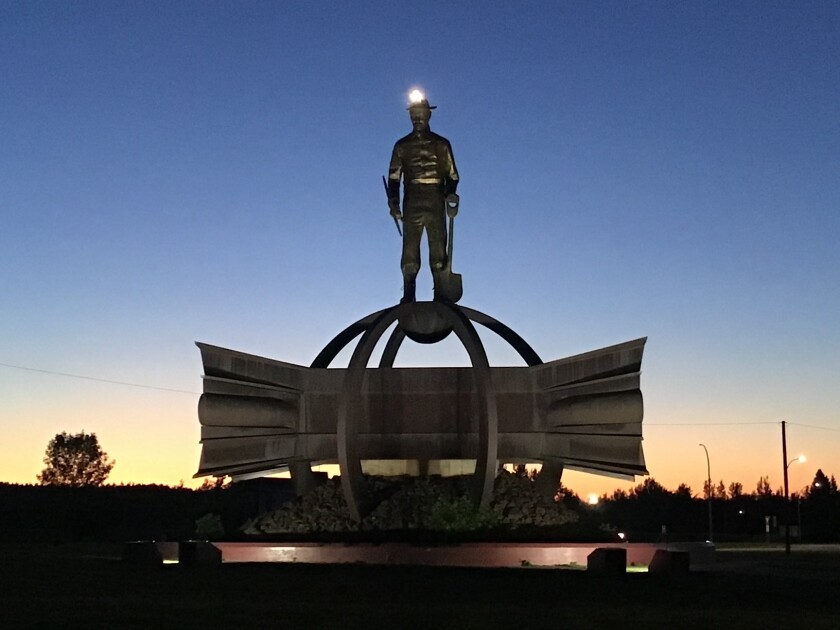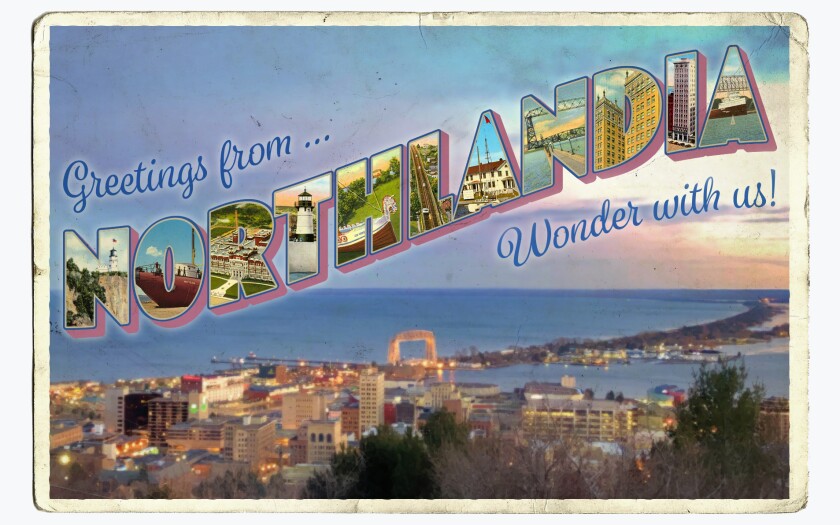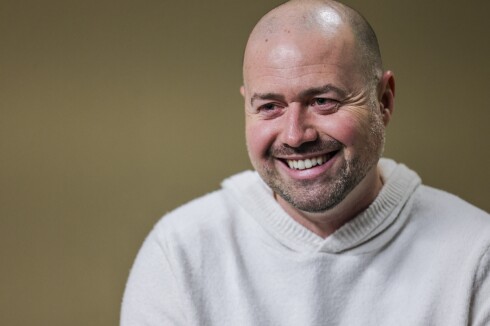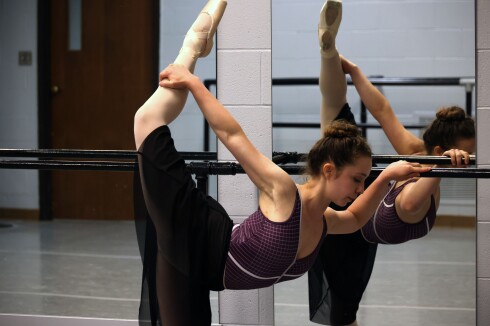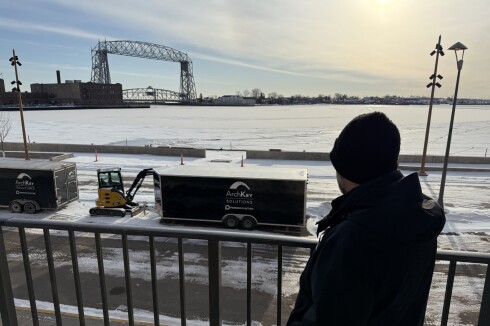CHISHOLM — Sculptor Jack E. Anderson took his time with the Iron Man.
"I am now working on the hands and face, the most difficult part of the sculpture in terms of creativity," he wrote in 1983. "The appearance of the face will be the most looked at, examined, remembered ... it is the most important feature of the entire statue."
ADVERTISEMENT
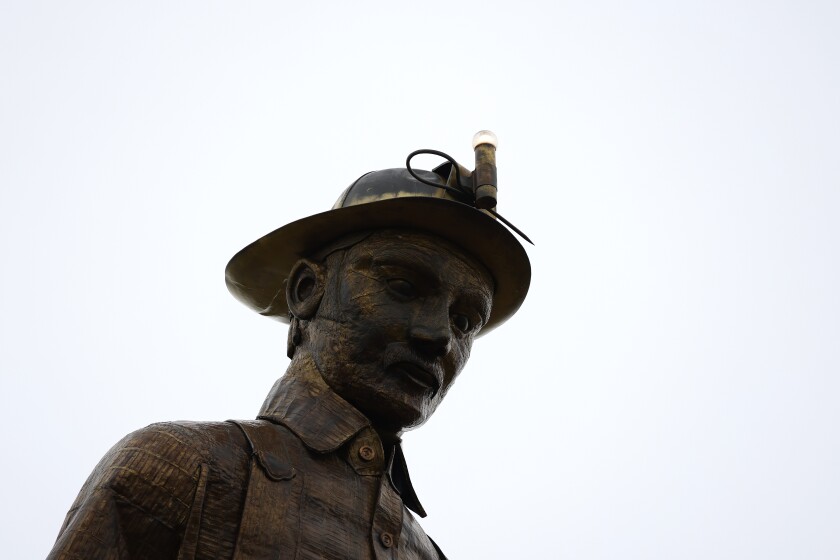
Doubtless that's true, but it's also the farthest away from the viewer. When you look up into the Iron Man's eyes today, you're looking up past an ore-covered mound, past a base that resembles a bushel of steel girders, and past the entire standing body of a figure taller than Optimus Prime.
"You can find 10 people who swear that it was their ancestor that's the model," said Carol Borich, a Chisholm resident since 1975. "The truth is that (Anderson) worked with a composite of people."
The sculpture's official title is "The Emergence of Man Through Steel." The name appears on a granite slab near the statue, which states the work's purpose in soaring language.
"This statue," it reads, "the third largest free-standing memorial in the United States, is a lasting tribute to the Mesabi, Vermilion, Cuyuna and Gogebic Ranges' men of steel who carried out of a sylvan wilderness the iron ore that made America the industrial giant of a world."
The text ends in large print: "THEY SHALL LIVE FOREVER! YES, THE IRON MAN LIVES." In smaller print, a byline appears. "By Veda Ponikvar."

The name of Veda Ponikvar is inseparable from the Iron Man project, and from numerous other points of Chisholm's civic pride. "If there was one thing she was, it was dogged," said Borich. "When she got her teeth sunk into a project, it was like a Gila monster. She was going to stick with that until it was done or she was dead."
Ponikvar (1919-2015) was a former U.S. Naval Intelligence officer who became publisher of two Chisholm newspapers and "arguably the most powerful person in Iron Range politics of the latter 20th Century," wrote historian Aaron Brown in an obituary.
ADVERTISEMENT
"She was kind of an unelected, unofficial kingmaker of the Range," Brown told the News Tribune in an interview for this article. "She made things happen, and one of the things she wanted was this statue."
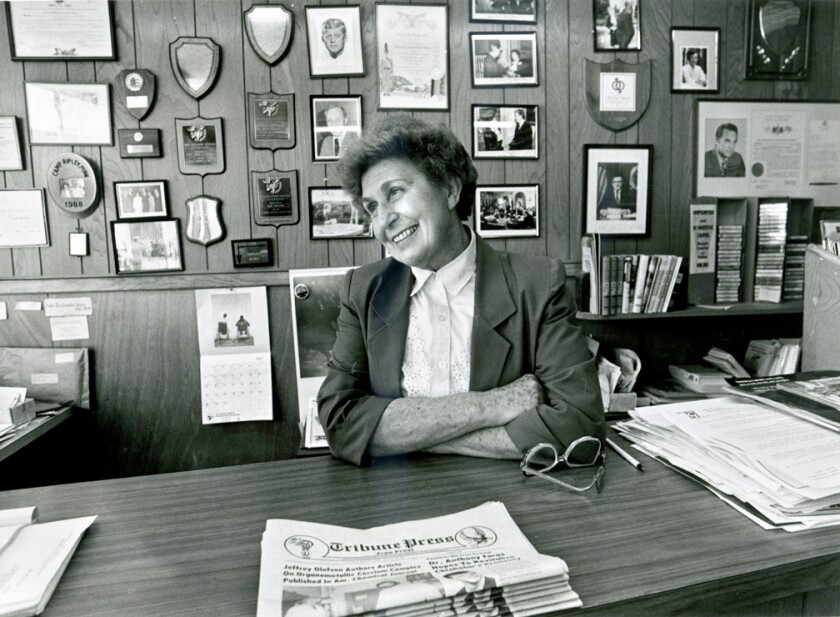
"Everybody that ran for public office, they came to see her," said Jerry Janezich, who served in both the Minnesota House of Representatives and the Minnesota Senate. "When I decided to run, I went to see if she would be helpful, and she was. ... It turned out to be a pretty interesting career because of what she helped me do."
Ponikvar was instrumental in projects ranging from the 1964 Taconite Amendment to the facility now known as the Minnesota Discovery Center, and it would take all her tenacity to get the Iron Man built.
As Jennifer Kleinjung chronicled in a carefully researched MNopedia article on the statue, a miner monument was first proposed in 1958, when the state was turning 100. The Minnesota Museum of Mining — another Ponikvar project — pitched the idea to the state's Centennial Commission, only to have it rejected.
Two decades later, the nation's bicentennial provided another opportunity to advance the Iron Man idea. A fund was launched in 1973, and a groundbreaking dedication ceremony took place in 1976. Over a decade would pass, however, before the statue was complete.
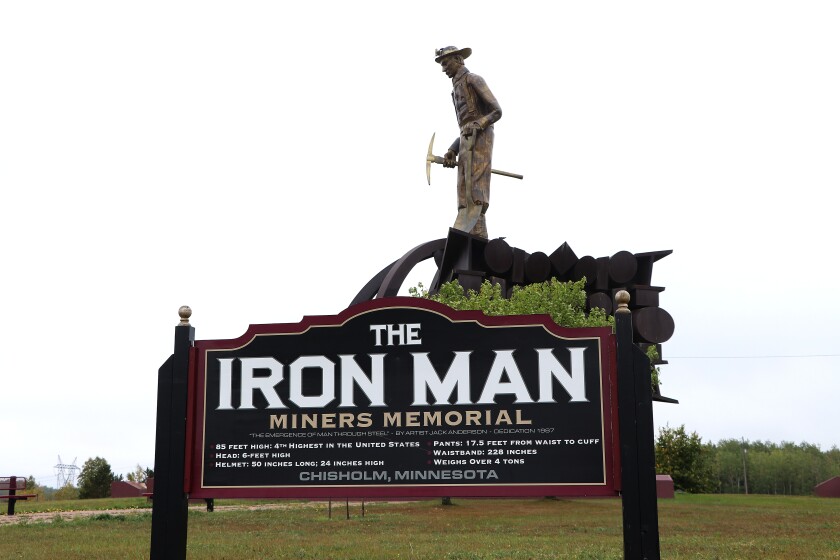
A committee chose Anderson as the sculptor, in part because they were impressed by his work on a Michigan memorial for Bishop Frederic Baraga, the Upper Midwest's revered "Snowshoe Priest." The process would prove somewhat tumultuous, with frustrations building amid funding challenges as the steel industry spiraled into a recession.
Ponikvar "demands an explicit report in writing with pictures and an outline of hours worked and expenditures incurred," Anderson wrote in frustration to committee chairman Peter DelGreco in 1983. That betrayed, the sculptor groused, a lack of understanding for his process.
ADVERTISEMENT
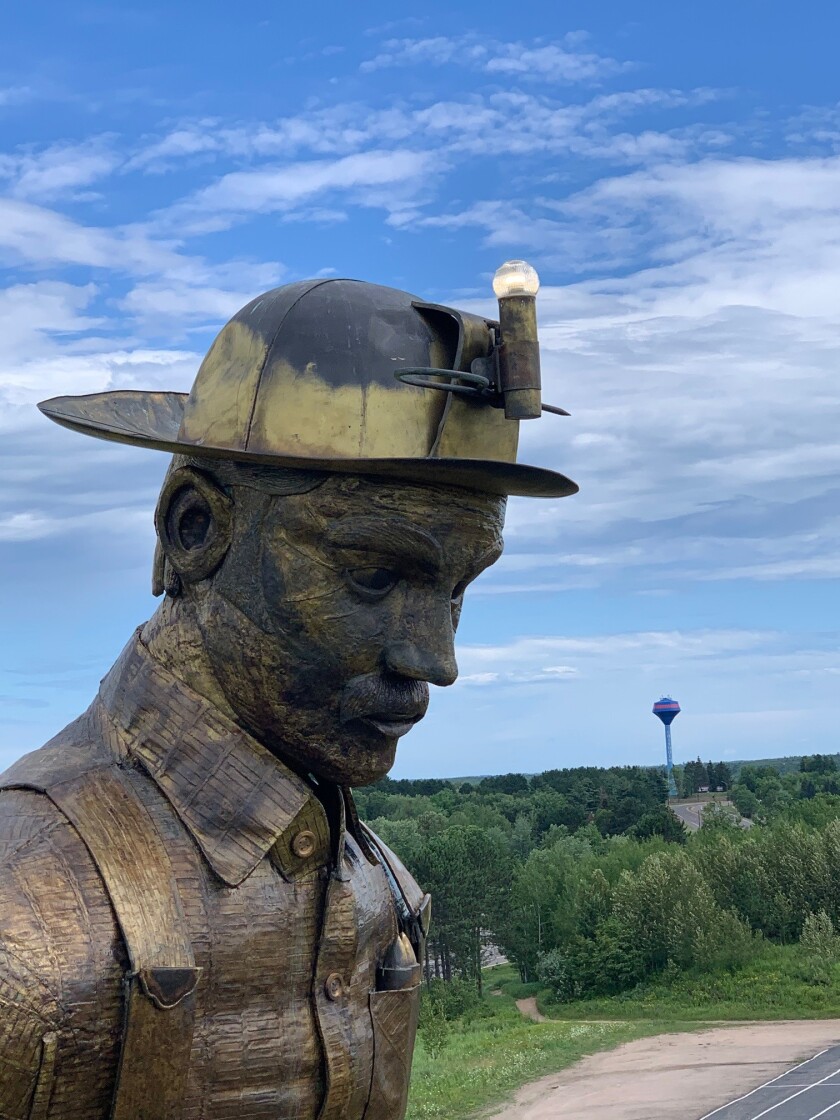
"If I can ... maintain my dignity as a sculptor throughout this process, and not be demeaned and relegated to the status of a hired tradesman, I would very much like to see this project through to its completion," Anderson wrote.
"He was an artist. Sometimes they get to be a little quirky," remembered Janezich with a laugh. When the sculptor came to Chisholm, he would stop in for drinks at Janezich's bar, Tom and Jerry's.
"Everybody would ask how it was going," remembered Janezich. "He'd always say, 'It's going good.' Even when it wasn't going good, he would say it was going good. He worked hard at it."
In 1982, Robert Bizal of the Iron Ore Miner Memorial Committee wrote to newly appointed Iron Range Resources and Rehabilitation Board commissioner Gary Lamppa, expressing the community's hope that funding to complete the statue would help the Range to "lure the heavy tourist traffic enjoyed by the Brainerd, Bemidji and Grand Rapids recreation area."
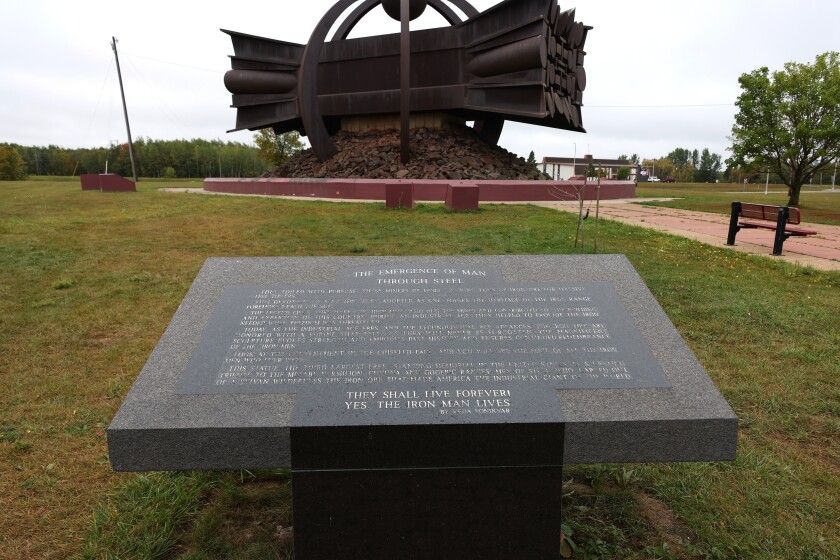
Bizal invited Lamppa and his staff to visit Chisholm and see "the Iron Ore Miner as he is today, waiting and hoping. He is lying fast asleep with his pick and shovel beside him in the basement garage of the Chisholm Senior Citizens' Center."
The IRRRB came through, supplementing previous donations that included "$88 in a cigar box from a group of fourth graders at our Lincoln School," according to a committee flyer cited by Kleinjung.
A plan to raise funds through the sale of engraved paving stones fell through due to the trouble and expense of producing the stones, to the disappointment of those who had already made earmarked donations. "I'll tell you," said Borich, who remembers that kerfluffle, "commemorative bricks around the country are the cause of more hard feelings than you would ever believe."
ADVERTISEMENT
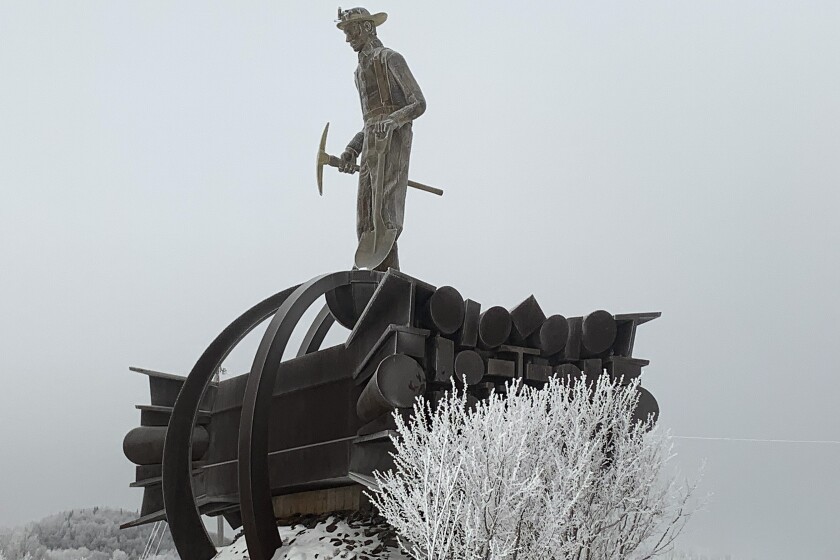
Originally planned for the grounds of the mining museum, the statue was instead erected on a highly visible piece of land across from the Minnesota Discovery Center, then known as Ironworld USA. The committee also had to abandon plans for a space in the base of the statue that at one point was planned to include a restaurant, gift shop and information center.
"It was going to be like a little mini museum visitor center," said Borich, who still owns a model reflecting that plan. "The cost did not allow for that, so instead there is a mound of earth that is covered over with slabs of mine rock."
In 1987, the statue was finally dedicated, in a ceremony with Gov. Rudy Perpich — Minnesota's only governor to come from the Iron Range — on hand.
"I was there. I might have been the emcee," said Janezich. "It was a nice crowd. People showed up."
"There were about 1,500 people that turned out," remembered Borich. "A lot of politicians, kind of a line of people standing in line to take credit for it."
Ponikvar's leadership was not forgotten. In addition to the installation of the tablet bearing her prose, the road to the statue was named Veda Ponikvar Boulevard.
"She thought that was overkill," said Borich about the road. "She was embarrassed by it and thought it was improper to single her out when she was just one of the team that was responsible for it being there."
ADVERTISEMENT
Over 35 years later, nearly 50 years after Anderson was hired and going on 70 years since the statue was first proposed, the Iron Man stands, proud and bright.
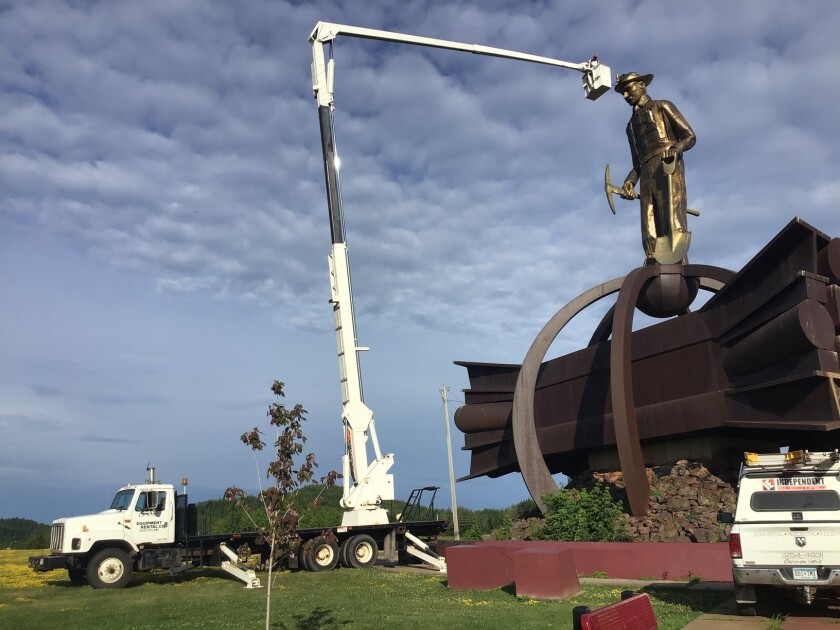
The unmissable glow of the miner's helmet light, which shines through each night, is thanks to a recent LED bulb installed by the city's public works department under the supervision of Larry Folstad. The light had been burned out for decades.
"I graduated high school in 1990," Folstad remembered. "We did senior pictures at the Iron Man, and the helmet light was burned out then."

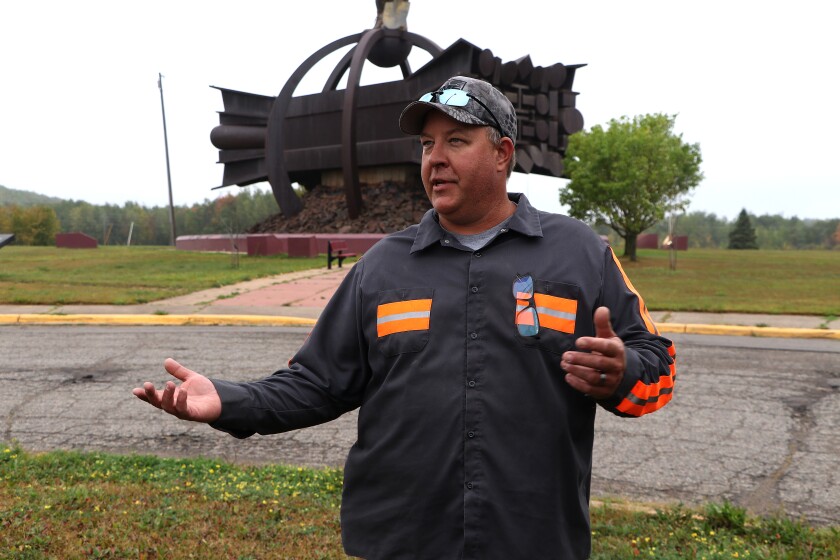
Folstad, who still has the original halogen bulb in his office, said that after all those years, it cost the city about $900 to replace the lamp. "We've had truck drivers that came by and say, 'You know, I've been driving by for 20 years, I've never seen that light on. Now I see it on.'"
Folstad can also personally testify that the statue's base doesn't contain any relics of the would-be visitor center. "There's absolutely nothing in there," he said.
"The memorial is a site of pride for the community," said Bridgit Maruska, Chisholm's parks, trails and recreation director. "Mining is the lifeblood of the Iron Range."
"If you would be out there for two hours, you'd have 15 to 20 visitors stop," said Borich, who's done exactly that, in the past, as a volunteer who helped to keep the monument's grounds weed-free. "It becomes a really common place for carpoolers to meet their ride."
ADVERTISEMENT
"It's been here now long enough that a lot of people don't remember it not being there," said Brown. "It is this constant reminder of an era when coming home from work wasn't guaranteed, when your physical self was sacrificed. When you worked in the mines, you gave up part of yourself every shift, and you did this for your family."
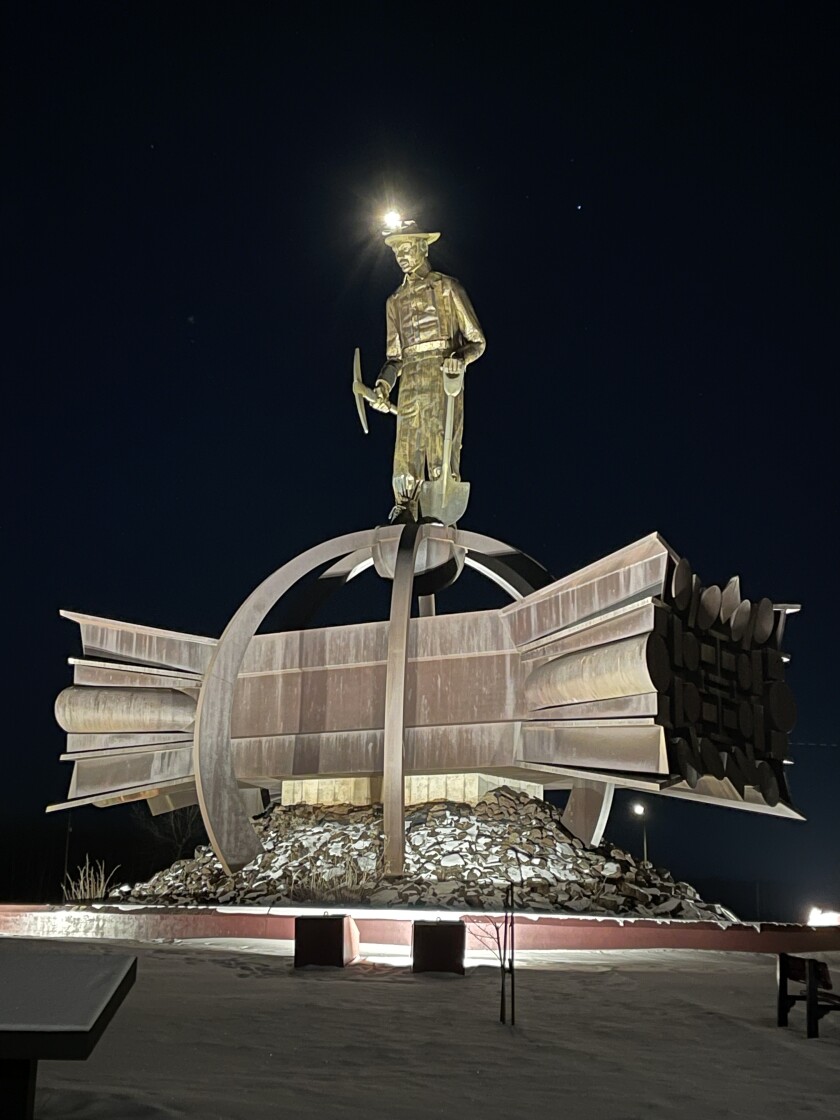
In that sense the statue's stoop, looking down upon the younger generations who now come to visit, is apt. "The image of that worker slumping home from a hard day at work," said Brown, "reminds you of what everyone went through a hundred years ago."
"As you drive up the highway, it kind of gives you a nice feeling," said Borich. "You cross the Range, and as you approach Chisholm, there he is, looking down at you ... and depending on who you talk to, he's everybody's grandpa."
"Surprisingly, it's not in some of the (travel) books and the magazines and the websites. I don't know if it's missed, or people don't know enough about it," said Folstad. "You can see it from the highway, and it'll blow you away when you come and stand underneath it."
"It looks great. It looks like it was supposed to," said Janezich. "Everybody thought, well, this just isn't going to happen. But it's like anything Veda tried ... it always turned out pretty well."
